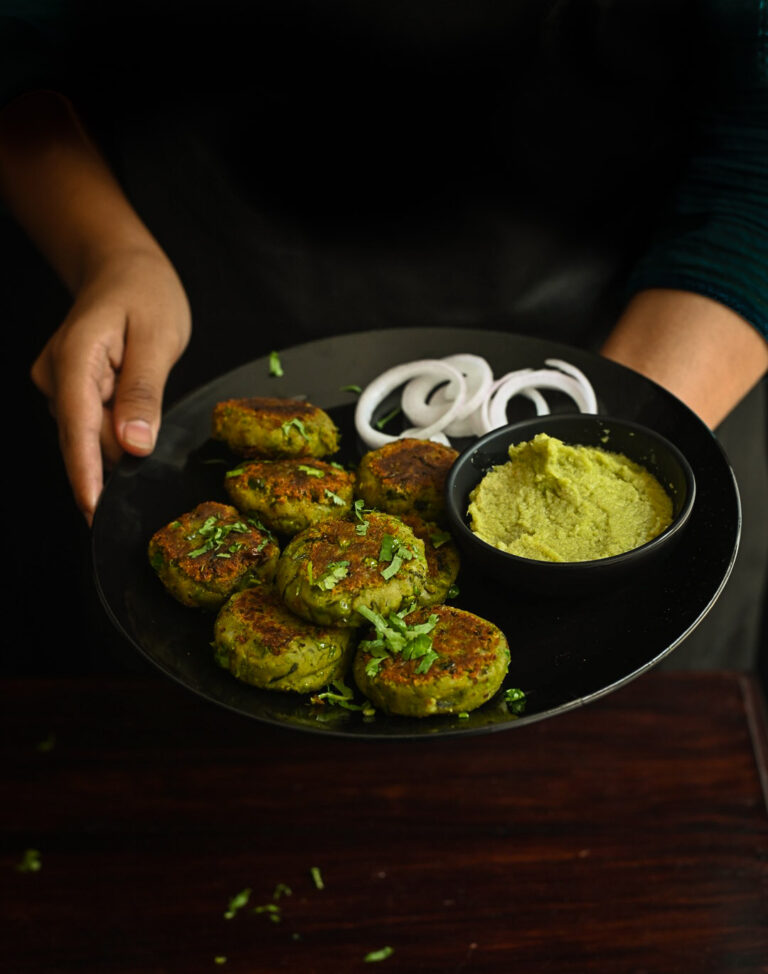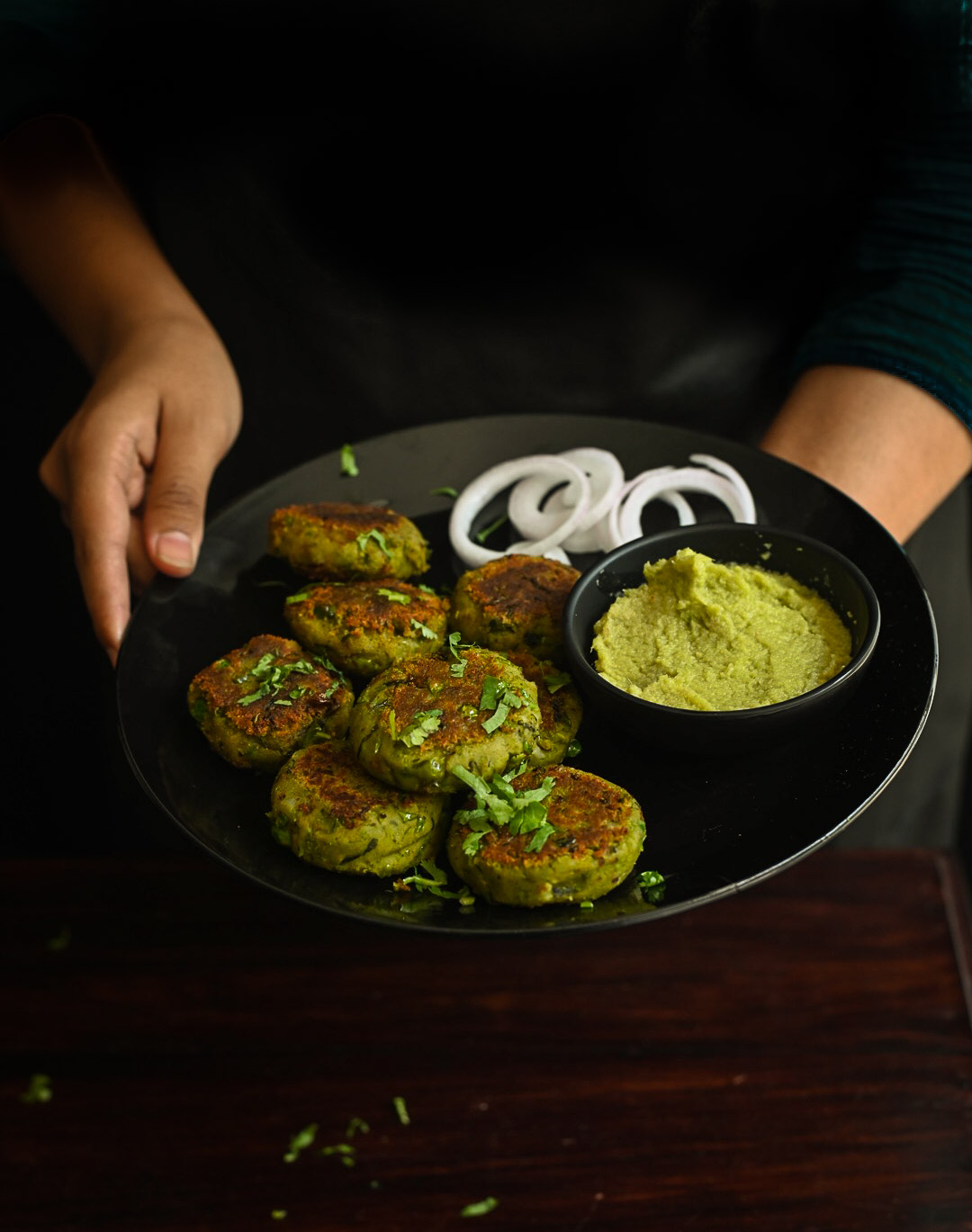
Every summer during my childhood, my family would drive up to Ooty to get away from the heat in Chennai. There we’d be, little children in our little Fiat car, excited to reach the hills. The drive would take anywhere between 8 and 12 hours, and since our car didn’t have an AC, it would be sweltering for most of the ride. So we’d stick our heads out of the windows and enjoy the drive. There were no eateries along the way, so we’d pack picnics for the journey. This was a ritual for many families we knew, who would escape the summer weather during the school vacations, in favour of the refreshingly cool climate of the hills.
As we came closer to our destination, not only would the air and the temperature become more and more pleasing, but the curling streets and by-lanes winding up to Ooty would be lined with the stalls of farmers, selling fresh produce like carrots and green peas, and a variety of fruits and other vegetables which grow well in that climate. Green peas would be sold by the name “English vegetable”. Even today, if you go to the local produce markets in Chennai and other places, “English vegetable” is the term that is used. Strangely, there is evidence that suggests it could be found in India some two thousand years ago, but no doubt it was the British who cultivated it properly. And who introduced it from their own cuisine into ours.

Green peas are not actually vegetables, but legumes. They are rich in antioxidants and fibre, have a high protein content (four times that of carrots) and also contain vitamins, manganese, folate and other beneficial elements. Like most green things that farmers grow, they are good for you.
Indians are very innovative when it comes to the kitchen. So all over India, the “English vegetable” was quickly welcomed into the family like they would a good daughter-in-law. Indianised and masalafied recipes featuring the ingredient became popular. We are big foodies in this country, and always find intelligent ways to incorporate new culinary elements into our own styles. Green peas are versatile, so you can make everything from a rice dish like a green peas pulao to so much more. The most bizarre dish I’ve heard of was a green pea halwa, a kind of sticky sweet – any chance you’ve tasted it? From this end to that, once it became popularised by the British, people made interesting dishes using this exotic “English vegetable”. Somewhere in the North, the availability of the green pea gave rise to a dish known as harra bhara kebab.
Kebabs in India originated from Mughal cuisine, from the palace kitchens of the Sultans. Although traditionally made of meat, today we make kebabs out of everything, even quinoa or paneer. The closest English equivalent, since we are using the “English vegetable” today after all, would be a patty or cutlet. Kebabs are sometimes cooked on a skewer, though not always served on one. The harra bhara kebab is a great hit at parties because it’s a fabulous vegetarian snack, especially for those who’d like to try a kebab but want to avoid the meat ones. The word harra bhara itself is a Hindi term – “harra” meaning “green” and “bhara” meaning “stuffed”.
While cooking this dish, the challenge is to add spices in such a way that the green peas and vegetables retain their colour. This is because the way it looks adds to your experience of eating it, and most cooks want to convey the freshness of the ingredients visually. Some add baking soda or other condiments to keep this so, but I always prefer to keep things natural.
There’s an abundance of green peas in the markets right now, so I decided to make harra bhara kebabs. And as the weather is slowly turning hotter, memories of those summer vacations and those calls of “English vegetable” in the street markets have come flooding back…
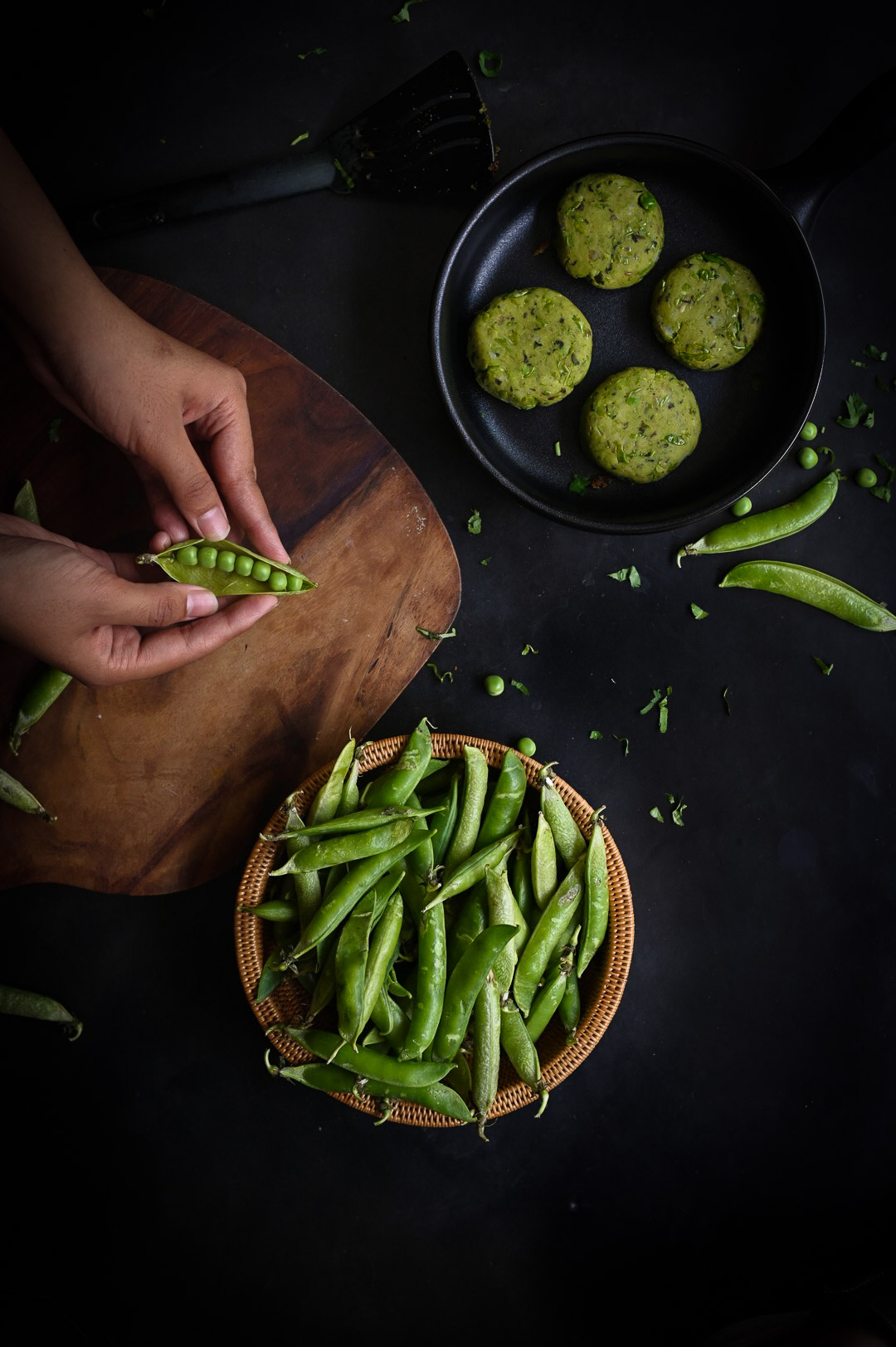
Harra Bhara Kebab
(Yield: 8-10 kebabs)
1 ½ cups green peas
¼ teaspoon cumin seeds
3 tablespoons oil
1 finely chopped green chili
½ cup finely chopped onions
½ teaspoon ginger garlic paste
½ teaspoon garam masala
½ teaspoon aamchur powder
¼ teaspoon sugar
½ cup coriander leaves
½ cup mashed potatoes
Salt to taste
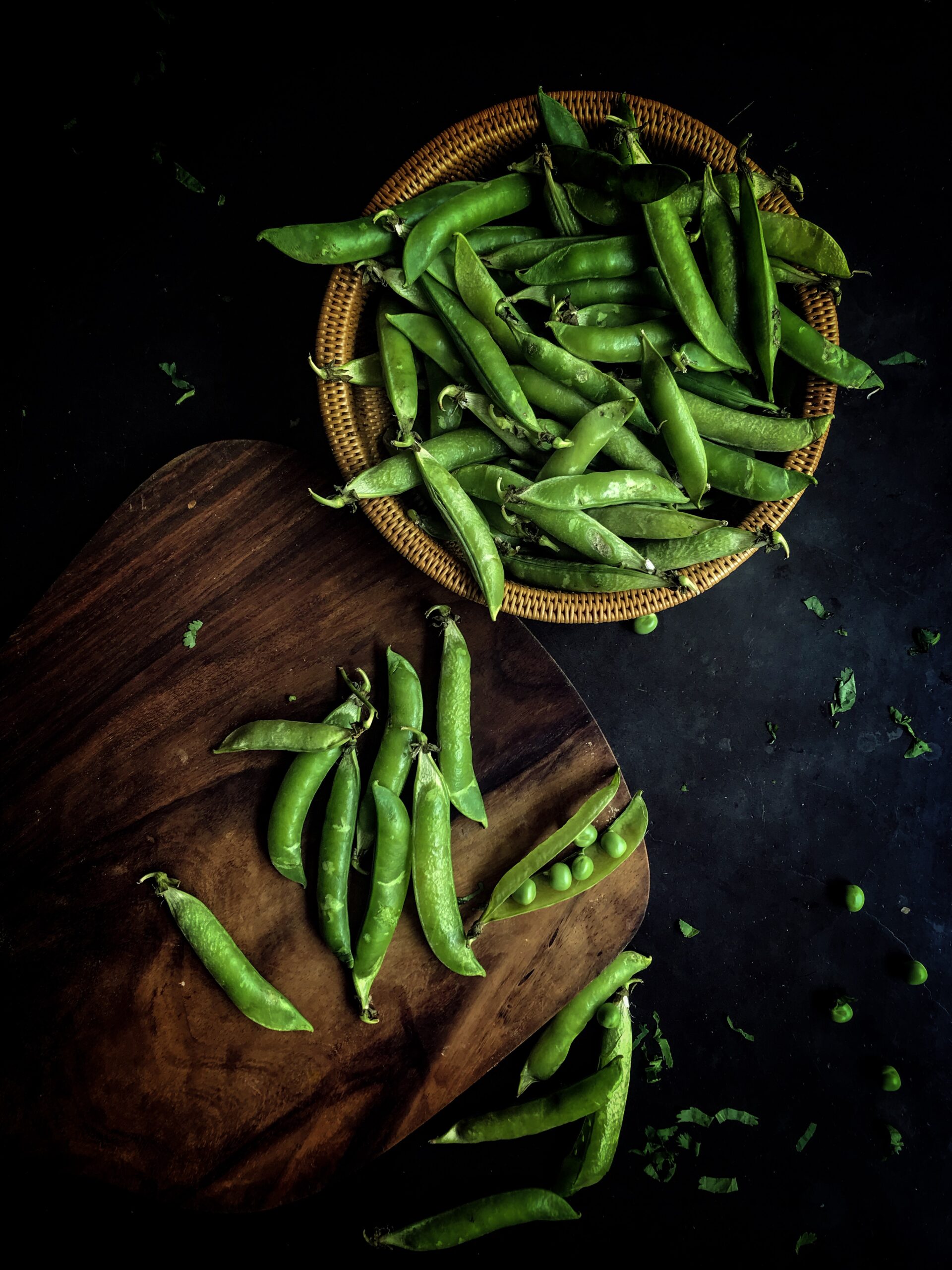
In a pan, add 1 tablespoon oil and the cumin seeds. Once the cumin seeds turn golden, add the onions. Sauté for 2 minutes and then add the ginger garlic paste. Sauté some more till the colour turns.
Now, add the green peas and green chili. On a medium flame, stir well, making sure it doesn’t stick to the bottom. Then, cover the pan with a lid so the peas soften a little bit.
Once the green pea mixture has softened slightly, add the salt, aamchur powder, garam masala, sugar and coriander leaves. Mix well and allow to cool completely.
Grind the peas mixture coarsely. Blend this with the mashed potatoes, using your fingers. Then, make small patties with your palms.
In a flat pan, add the remaining oil. Once the pan is heated, place the kebabs gently on the oil. Keep the flame between low to medium and turn them over gently. Make sure they’re done well on both sides. Remove from the pan.
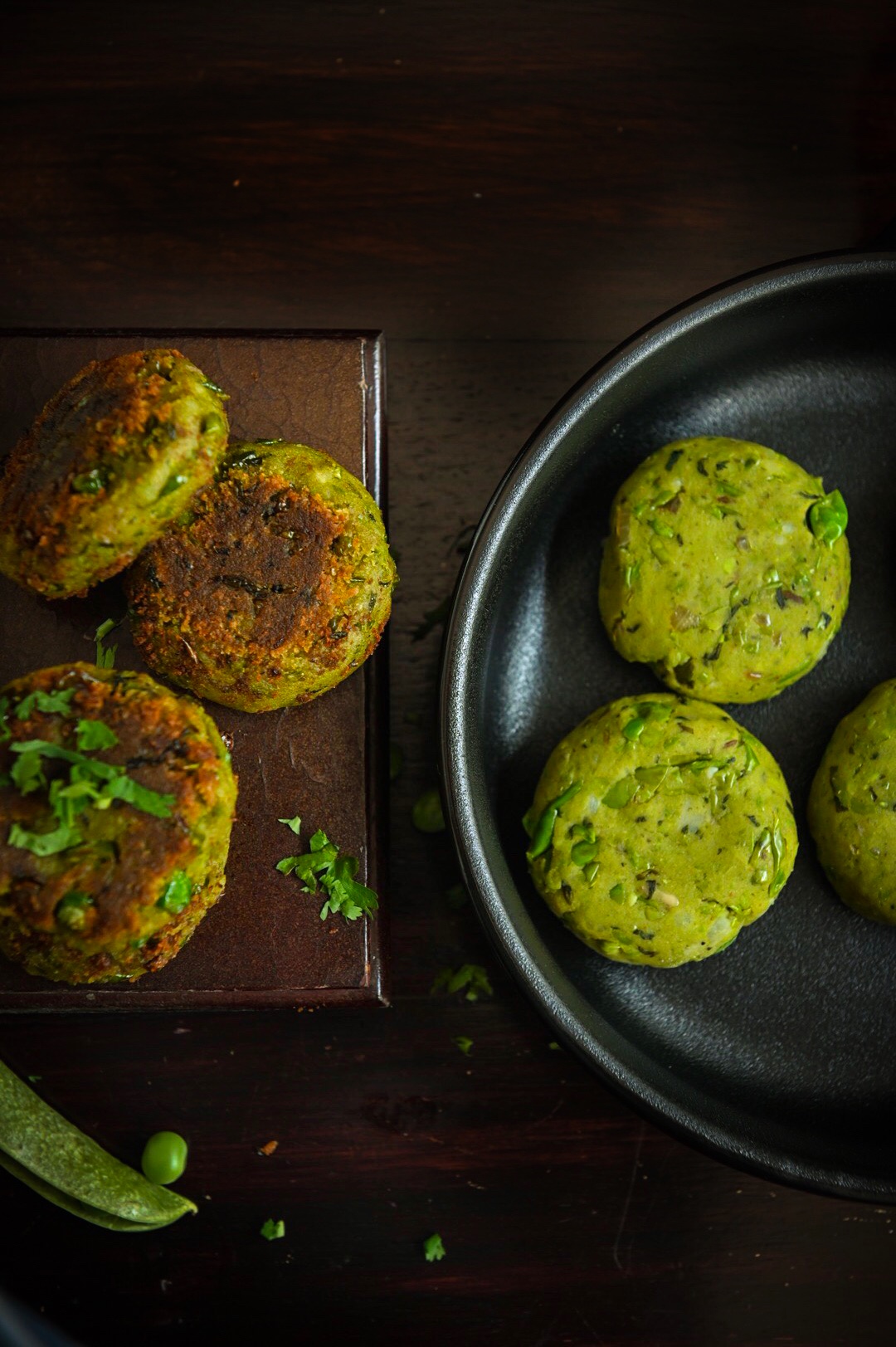
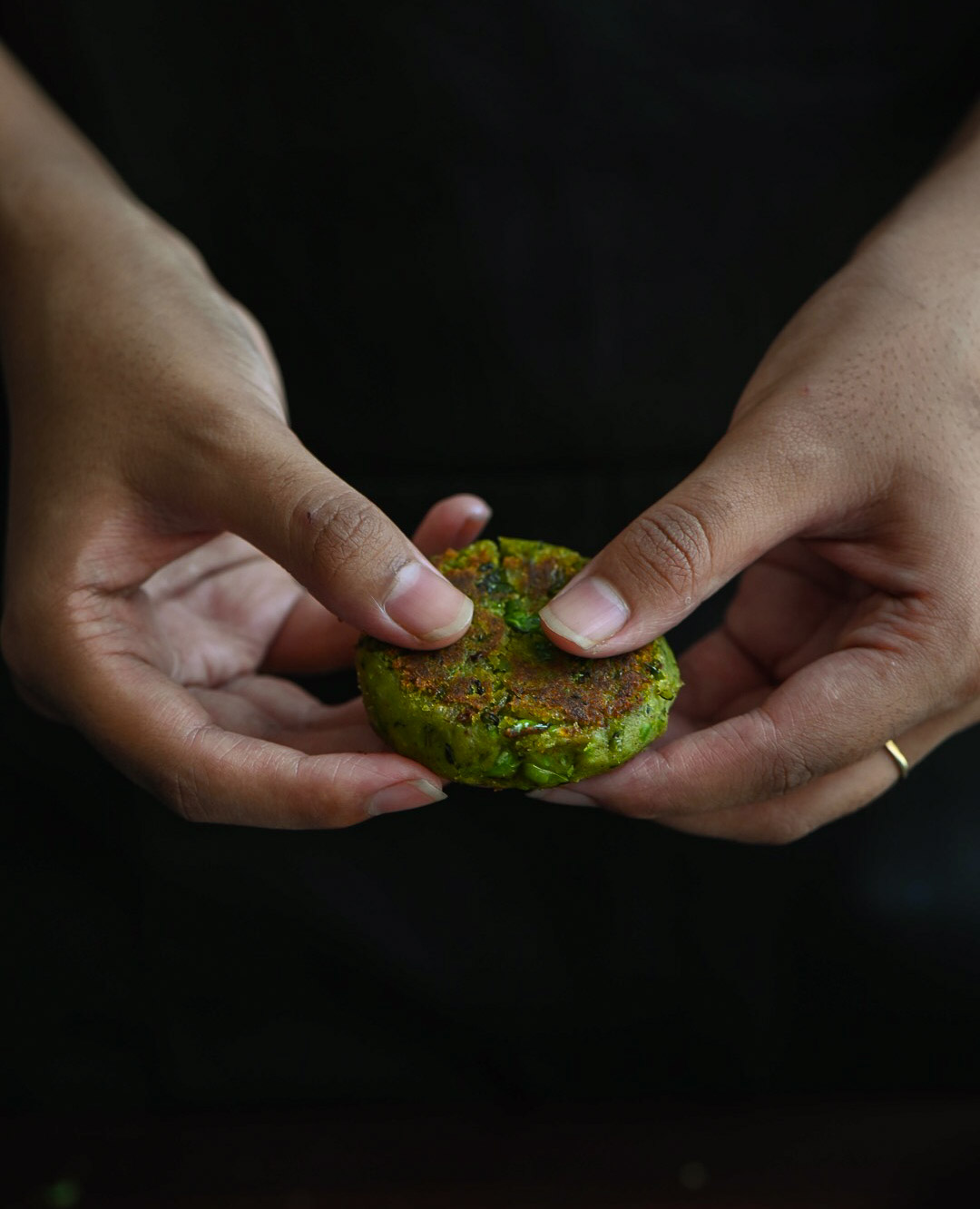
These harra bhara kebabs are ideal for sharing and are a perfect finger food, especially for parties where you want to add a few exciting vegetarian options to the menu. Serve them with a dip of your choice. I like them with a green coriander chutney, which you may remember from this earlier snack recipe for banana methi fritters. A tamarind chutney will also go very well. I’d love to know what dip accompaniment you like best for these harra bhara kebabs when you try them out. Looking forward to your comments!


